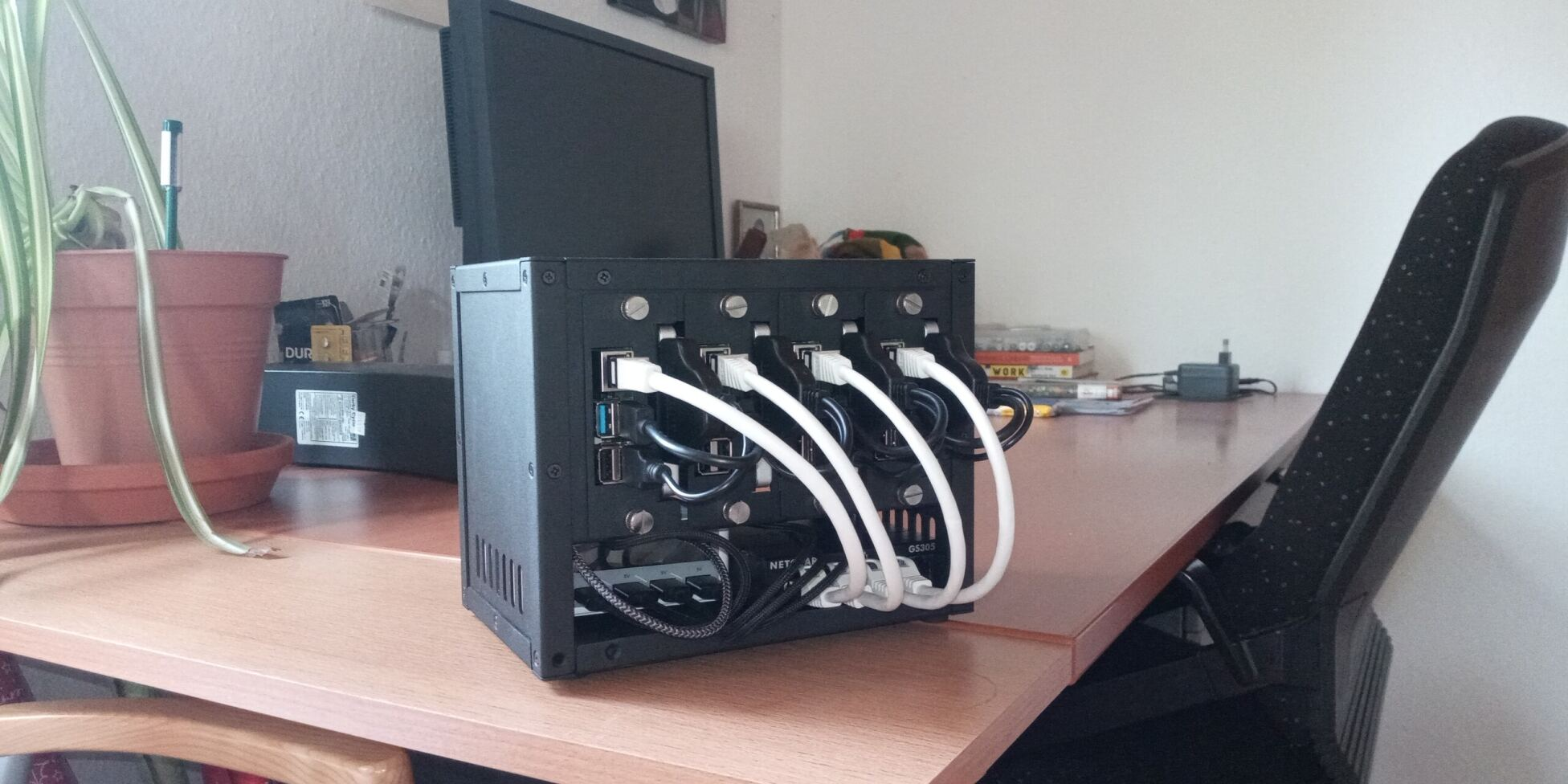The Journey Begins
How did i end up thinking about a Kubernetes cluster of my own ?
After initially being quite excited about the possibilities offered by Kubernetes on GCP, i was quickly frustrated by the fact that operations kept us at arm’s length from playing on the Cloud Console (aka command line).
Turns out Google has to earn money, so all resources have to be paid for. On top of that every change is going through Terraform in a Gitops pipeline. It was quite disenchanting.
While looking for ways to set up an environment that i could manage on my own, i came across a number of blogs where people deployed k3s (a bare-metal kubernetes distribution) on Raspberry Pi clusters in all shapes and sizes. I had used Raspberry PIs for a number of projects throughout my house over the years, so i decided to give it a try.
Even if i did not require an HA configuration with 99.999% availability i still wanted a decent case, a fan, and no wires all over the place.
This is what i came up with.

The assembled cluster sitting on a desk
A 4-node Raspberry Pi 4 cluster.
Each cluster node has a 500 GB SSD attached via a SATA/USB 3.0 adapter. The SSDs serve both as OS disks as well as storage medium for Kubernetes persistent volumes. The price-tag was about 500 EUR. A decent price for 16 cores, 32 GB of RAM and 2 TB of disk space.
Power is provided by a 5-port USB hub. Connectivity is managed by a 5-port switch. So i have 2 220V connections and 1 Ethernet patch cable. Good enough to get started.
Power consumption is between 15 to 20 W. Running the cluster 24x7 amounts to about 70 EUR/year at 0.4 EUR/kWh. Compared to the annual 1400 EUR bill for an Intel Tower with a 400 W power supply this is quite a bargain.
In this series of blogs i will cover my journey of turning this gadget into a useful member of my household.
Stay tuned.